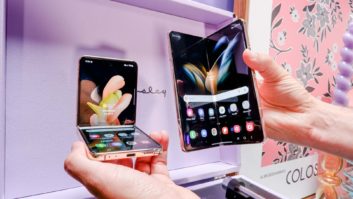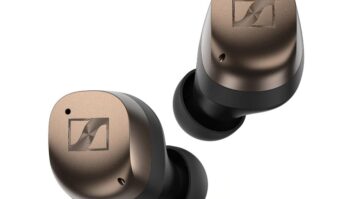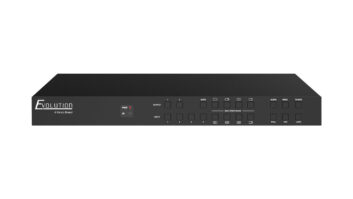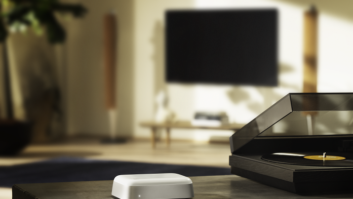BARCELONA, SPAIN –
The first quad-core smartphones,
a growing selection of Android 4.0 and 4G
LTE phones, and smartphones with high-end digitalcamera
capabilities took the recent Mobile World
Congress by storm.
The event, held here, was also marked by the
launch of the first two smartphones using a newer
version of the Windows Mobile 7.5 OS designed for
lower powered phones. One model was from Nokia,
the other from ZTE.
In quad-core Android-based smartphones, the
industry’s first models were launched by HTC,
Huawei, LG, and ZTE at processor speeds up to
1.5GHz.
Android 4.0 phones also appeared from the
four companies, all of which also showed new LTE
phones.
Other new phones included a projector-equipped
Samsung Android phone, LG’s first
LTE-equipped glasses-free 3D phone, a 41-megapixel
cameraphone from Nokia, and a trio
of HTC Android smartphones with next-generation
camera enhancements.
Here’s what attendees found:
Huawei
trotted out its first LTE phones, including
an LTE version of the dual-core Ascend P1 shown
at CES. The Chinese company also showed its first
two quad-core phones, which lack LTE.
The LTE phones include the Ascend P1 LTE with dual-
core 1.5GHz processor, Google’s Android 4.0 OS,
4.3-inch Super AMOLED qHD 960 by 540 capacitive
touchscreen, 8-megapixel back camera with 1080p video
capture, 1.3-megapixel front camera, DLNA certification,
MHL-HDMI connection and advanced camera features.
At International CES, Huawei unveiled a 4G 21Mbps
HSPA+ version of the P1, which is banded to operate in the
AT&T and T-Mobile HSPA+ networks as well as in foreign
HSPA+ markets.
Huawei’s second LTE phone unveiled at MWC was the
Ascend D LTE, which features dual-core 1.5GHz processor,
4.5-inch HD touchscreen, Android
4.0, 720p HD screen with 330 pixels
per inch, ability to view content in direct
sunlight, 32-bit true color graphic
processor, 1080p video capture and
Dolby 5.1 surround.
Details on the bands in which the
LTE phones operate were unavailable.
The company’s first two quadcore
smartphones feature Android
4.0, Huawei-made K3V2 quad-core
1.2GHz/1.5GHz processor and 4G
HSPA+ technology. They are the D
Quad and D Quad XL, both in the Ascend
series. They will be available in
North and South America in the second
quarter.
Both quad-core phones offer identical
features, but the Ascend D Quad
XL comes with larger battery.
Both models feature a 4.5-inch 720p
HD screen with 330 pixels per inch
and ability to view content in direct sunlight,
the company said. They also have
1080p video capture and Dolby 5.1 Surround Sound.
LG
expanded its lineup of 4G LTE smartphones with a
next-generation glasses-free 3D phone and a big-screen
phone that competes with Samsung’s Galaxy
Note hybrid tablet/phone.
The company also launched its first quad-core phone,
the Optimus 4X HD with Nvidia’s quad-core 1.5GHz Tegra
3 processor and True HD IPS 4.7-inch display. The 4X HD,
which lacks 4G LTE, is billed as featuring the world’s only
4-Plus-1 quad-core processor, which incorporates a fifth
battery-saving core that handles less-demanding tasks
such as active standby.
The 4X HD’s other key features include Android 4.0 OS,
1,280 by 720 HD display, 16GB internal memory, 8-megapixel
rear camera with LED flash and 1.3-megapixel front camera.
Another new phone is the Optimus 3D Max with 4G
LTE and glasses-free 3D display, which displays 3D images
and videos captured by the phone and converts 2D
images to 3D.
The 3D Max will launch with the Android 2.3 OS but is
upgradable to Android 4.0. It features 1.2GHz dual-core
processor, 4.3-inch WVGA display, 4G HSPA+ 21Mbps
technology, and nearfield communications (NFC). NFC
can be used with tags whose macros automatically adjust
phone settings.
Samsung
’s Android Gingerbread-based Galaxy Beam
incorporates 15-lumen projector to display content at up to
50 inches wide on a wall or ceiling in
indoor and outdoor environments.
The phone features 1GHz dual-core
processor, 4-inch 480 by 800 WVGA
TFT display, 8GB internal memory,
2,000 mAh battery, 5-megapixel rear
camera with flash, front 1.3-megapixel
camera, 720p video capture at 30 fps,
Bluetooth 3.0+HS, Wi-Fi 802.11b/g/n/,
Samsung Kies and a 0.5-inch depth.
The Beam features 4G HSPA+
14.4Mbps cellular-data technology in
the U.S. 850/1900MHz bands and in
foreign 900/21000MHz bands.
Sony Mobile Communications
expanded its range of NXT-series
Android smartphones and vowed to
launch its largest brand advertising
campaign in years.
The Xperia P and U expand the NXT
series to three models, all featuring a
“minimalist approach in hardware and
software,” said chief marketing officer
Steve Walker.
The P and U will join the NXT series flagship, the Xperia
S, which was launched at January’s International CES.
The Xperia S is a PlayStation-certified phone with dualcore
1.5GHz processor, 1,280 by 720 4.3-inch display,
12.1-megapixel camera and FullHD video capture.
Compared to the S, the two new models feature smaller
screens and slightly slower 1GHz dual-core processors,
and they lack the S’s PlayStation certification for downloading
and playing PlayStation-branded games. Both new
models ship with Android 2.3 and will get an upgrade to
Android 4.0.
The company didn’t disclose whether any NXT-series
phone will be available in the U.S., but the P and U operate
in HSPA mode in the U.S. 850/1,900MHz bands as well as
in the foreign 900/2100MHz bands.
ZTE
unveiled its first Android 4.0 smarphones, two incorporating
4G LTE and dual-core processors. A third Android
4.0 phone is the company’s first phone with quadcore
processor.
Among the dual-core phones, the PF200 features dualcore
1.5GHz processor, 4.3-inch 950 by 540 screen, LTE
and HSPA+ cellular, NFC, 8-megapixel rear-facing camera
and front-facing camera.
The N910 smartphone features CDMA and LTE operation,
dual-core 1.2GHz processor, 4.3–inch 800 by 480
touchscreen, front camera with 1080p video capture and
5-megapixel rear camera.
The quad-core Era features HSPA+ technology, Nvidia
Tegra 3 1.3GHz AP30 chipset, Android 4.0, 4.3-inch qHD
960 by 540 pixels display, 8-megapixel camera and MHL port.
ZTE also launched a low-price Windows smartphone
called the Orbit with 4-inch 800 by 480 screen, 5-megapixel
camera, 4GB memory, no memory card slot,
512MB of RAM and a 1GHz processor. It ships in the
second quarter.













